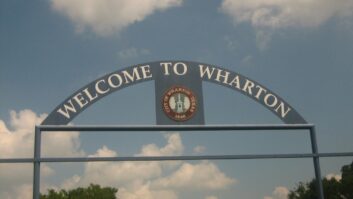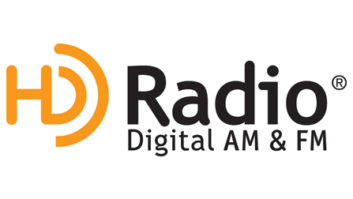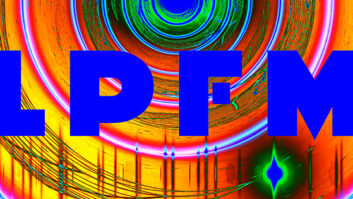The FCC is currently considering twin petitions that appear to have nearly unanimous support among broadcasters and interested parties who have filed comments. Combined into one proceeding, one petition calls for an alternative power formula for in-band/on-channel (IBOC) digital operations and the other would allow for digital FM asymmetric sideband operations without experimental authorizations.
However, there is dissent from one broadcast engineering consulting firm opposing what it calls a “global approach allowing all FM stations to operate with higher side-band power” without consideration for the potential of actual interference.
A 2022 petition from the National Association of Broadcasters and Xperi asked the FCC to adopt an updated formula to determine maximum power levels. The move would allow more HD Radio stations to increase digital power over the currently authorized digital ERP of -14 dBc, without need for separate FCC authorization. Current FCC rules allow digital stations that meet certain guidelines to operate at ten percent of analog power currently.
The commission combined the NAB and Xperi petition with a second filed in 2019 by them − along with NPR − to permanently authorize FM stations to use HD Radio with asymmetric sideband power levels without FCC experimental authorization.
Beasley Media Group and Cox Media Group previously expressed support for the petitions and now iHeartMedia, in reply comments, tells the FCC the petitions propose “less administratively burdensome processes and more realistic guideposts for improved IBOC operations” for broadcasters.
“Interference protections and processes already in place, along with long term, real-world beneficial digital operations warrant improvements in the FCC process for IBOC service,” iHeart commented to the FCC. “To further this public end, the commission should promptly issue a consolidated Notice of Proposed Rulemaking (“NPRM”) proposing the reforms set forth in the petitions.”
[Related: “Broadcasters Voice Support for FM Digital Power Increase“]
At present, 393 of iHeart’s FM stations have IBOC digital operations, the broadcaster said. There are approximately 2,600 FM stations using HD Radio in the United States, according to Xperi.
iHeartMedia in its comments offers support of the proposals’ intentions to streamline the FCC process for asymmetric sideband digital operations and to update the ERP formula.
“The proposals are well grounded in real world experience, as well as comprehensive field testing and rigorous scientific evaluation,” said iHeart. “The need for greater digital services that better replicate the analog signal and which offer additional metadata improvements is well established.”
Xperi and the NAB believe that higher power will improve digital FM coverage and digital FM signal penetration of buildings while minimizing interference to adjacent-channel stations. The groups in reply comments point to the nearly unanimous support of their proposals and the potential more stations might invest in HD Radio technology because of improved coverage areas.
“One obstacle has been the inability of some stations to duplicate their analog coverage under currently permitted maximum power levels for digital broadcasting. NAB submits that blanket authority to use asymmetric sidebands combined with an updated digital power formula will spur more broadcasters to adopt HD Radio,” NAB told the FCC.
Xperi, the developer of HD Radio technology, agrees “with the numerous commenters who recognized that the proposals set forth in both the Digital Power Petition and the Asymmetric Sideband Petition will provide broadcasters with greater flexibility in determining how best to serve their listeners.”
Importantly, Xperi says, neither of the petitions proposes mandating the use of increased power.
“Rather, the petitions would simply empower broadcasters to take advantage of the immense flexibility provided by HD Radio technology to improve service only where it makes business and technical sense to do so,” Xperi wrote the FCC.
It concluded: “Given the voluntary nature of the proposed power increases and the versatility of the HD Radio system, there is no technical reason not to authorize the use of increased power levels as proposed in the Digital Power Petition and the Asymmetric Sideband Petition.”
[Sign Up for Radio World’s SmartBrief Newsletter]
There hasn’t been much opposition on the record to the proposals, but reply comments from broadcast the engineering consulting firm Cohen, Dippell and Everist P.C., which specializes radio RF design and regularly conducts FM interference studies for a variety of clients, raise the issue of the potential for increased interference in the FM band.
Upon review of previous comments in the proceeding from New York Public Radio; National Public Radio and the International association of Audio Information Systems, the technical consulting firm told the FCC: “This firm opposes a global increase in actual FM side-band power by any FM station in absence of appropriate interference studies to determine whether or not actual predicted observed interference could result.”
The letter is signed by Donald Everist, a registered professional engineer and principal at the firm.
In previous comments, the broadcast engineering firm asked the FCC as part of the proceeding to adopt a procedure to establish the presence of absence of possible interference as a result of the increase in digital side-band power.
The commission originally authorized FM stations to operate with digital ERP equal to 1 percent of analog power or –20 dBc. In 2010 it allowed stations to operate at –14 dBc but to allow stations that meet certain guidelines to increase to –10 dBc, or 10 percent of analog power.
In some cases, to operate above –14 dBc, stations must submit a request with an analysis of its potential to cause interference to adjacent-channel analog signals. Stations must use a technical formula developed by National Public Radio and supported by Xperi predecessor iBiquity Digital.
Xperi and NAB say the approach was intentionally conservative and can be loosened based on field experience.
Comments in Docket 22-405 can be viewed in the FCC’s online system Electronic Comment Filing System.










